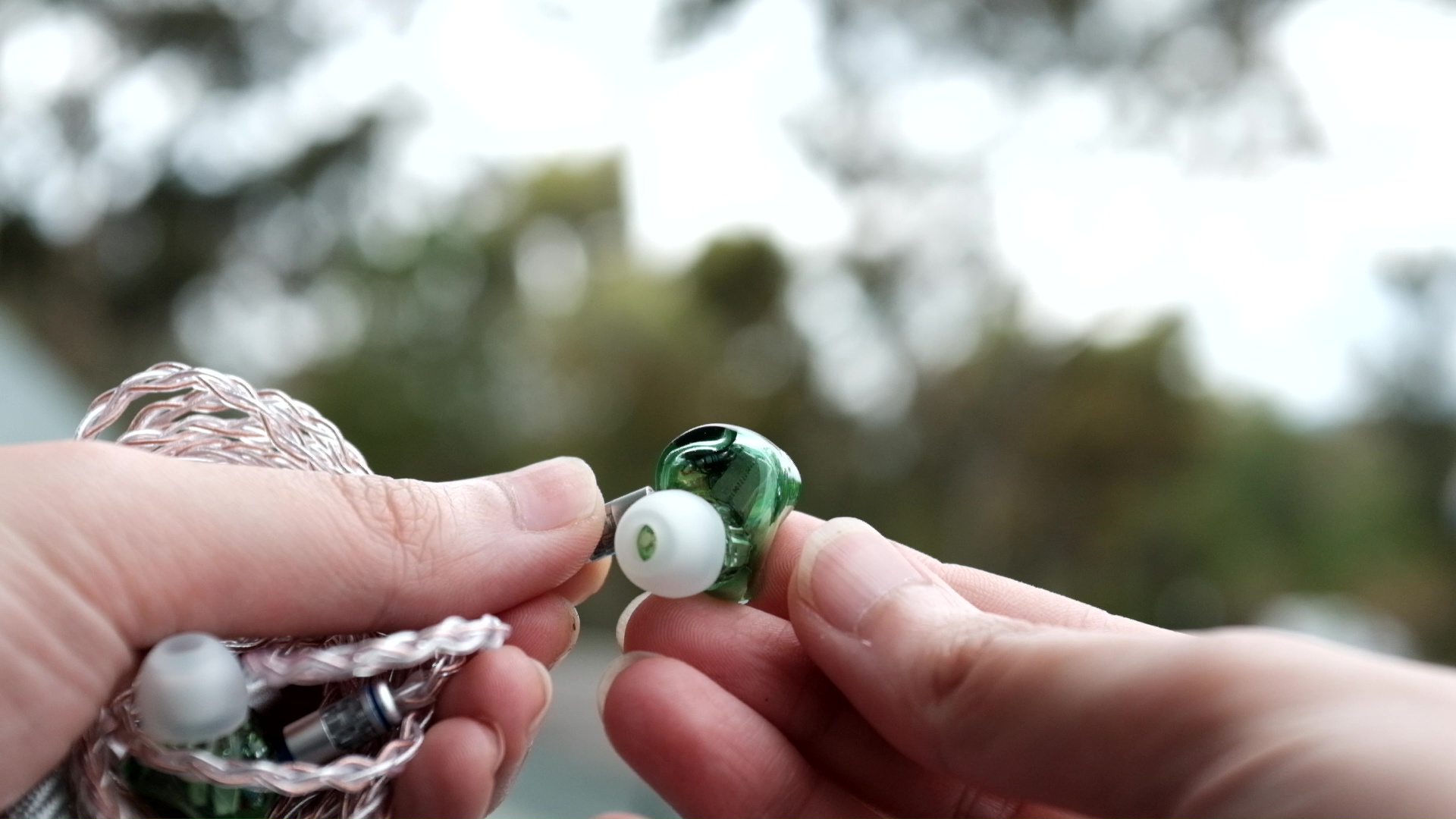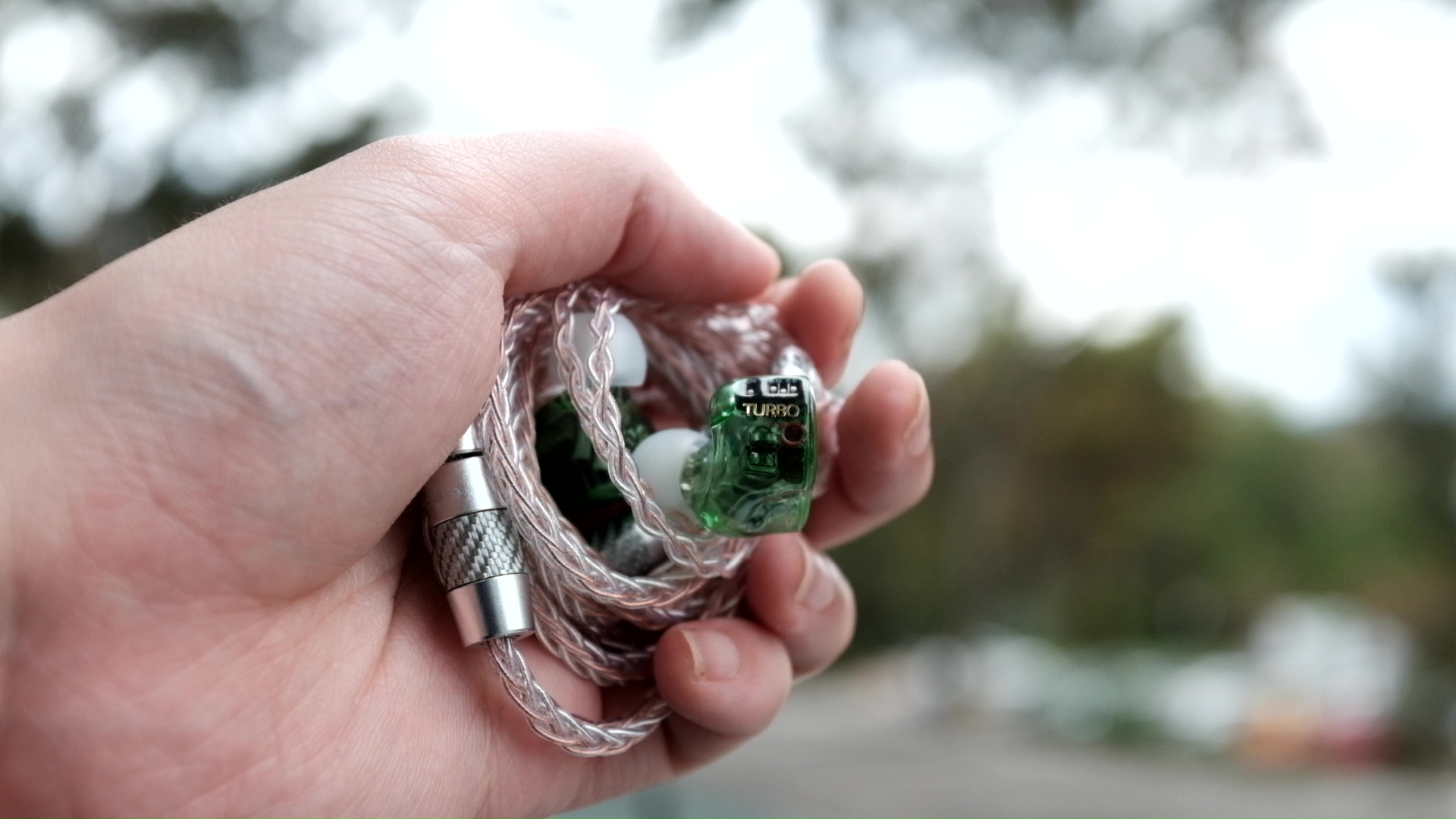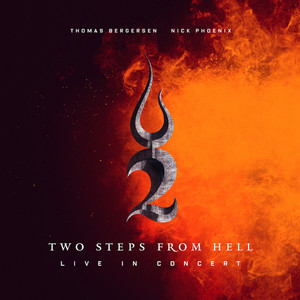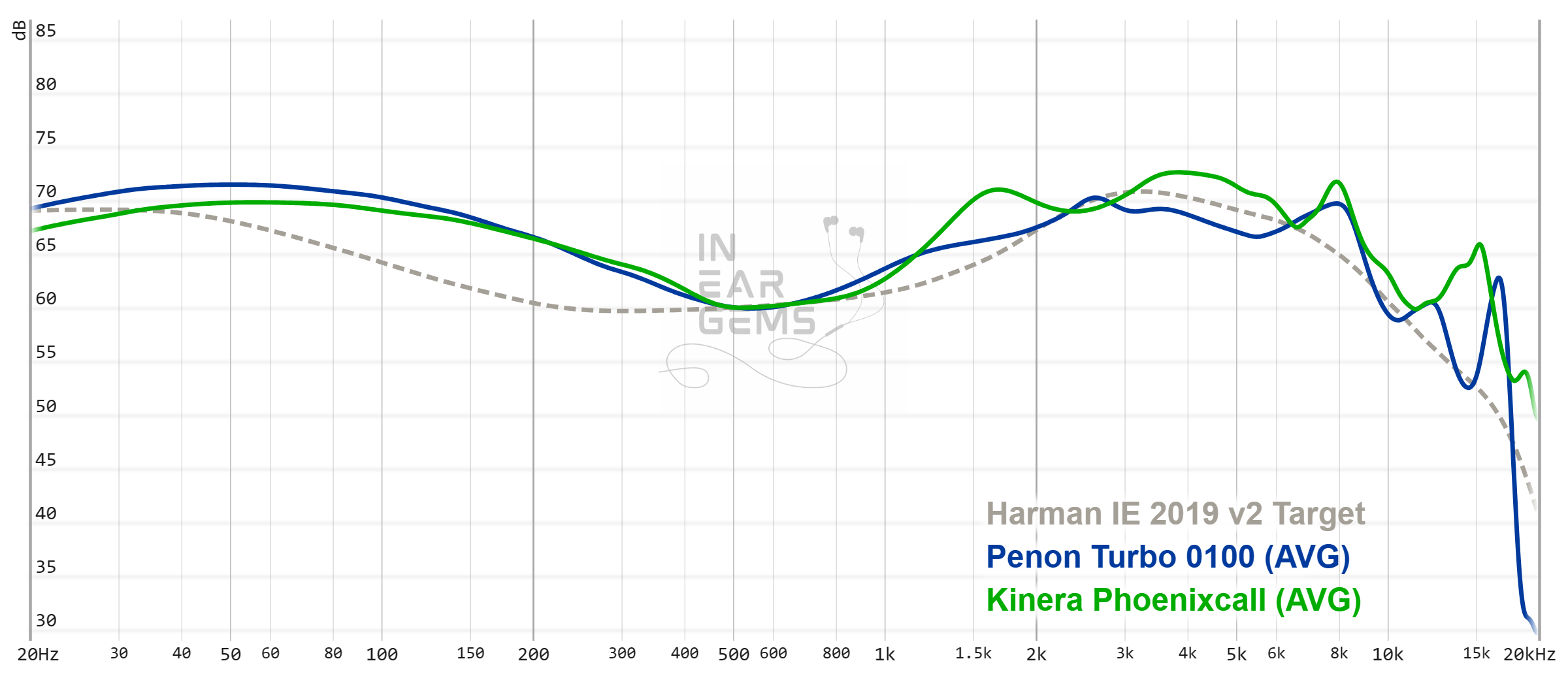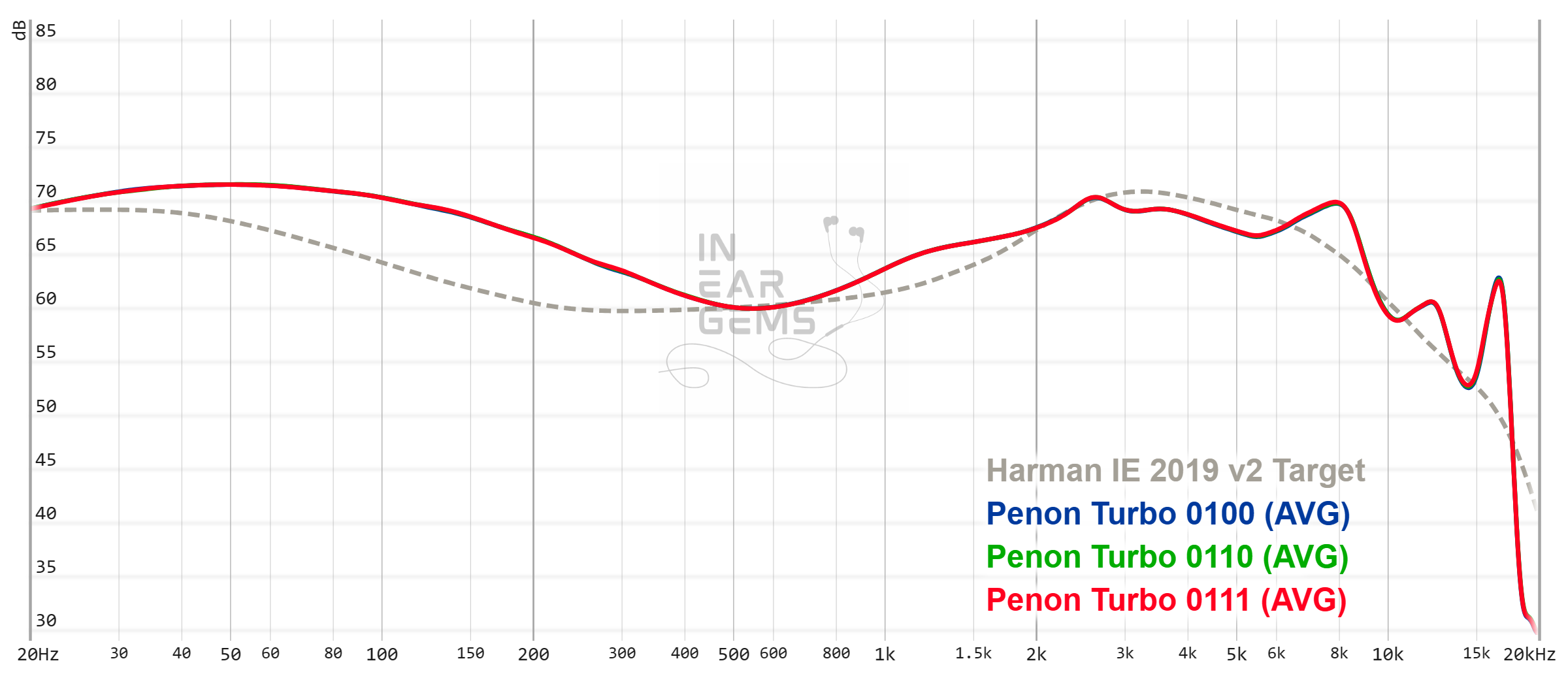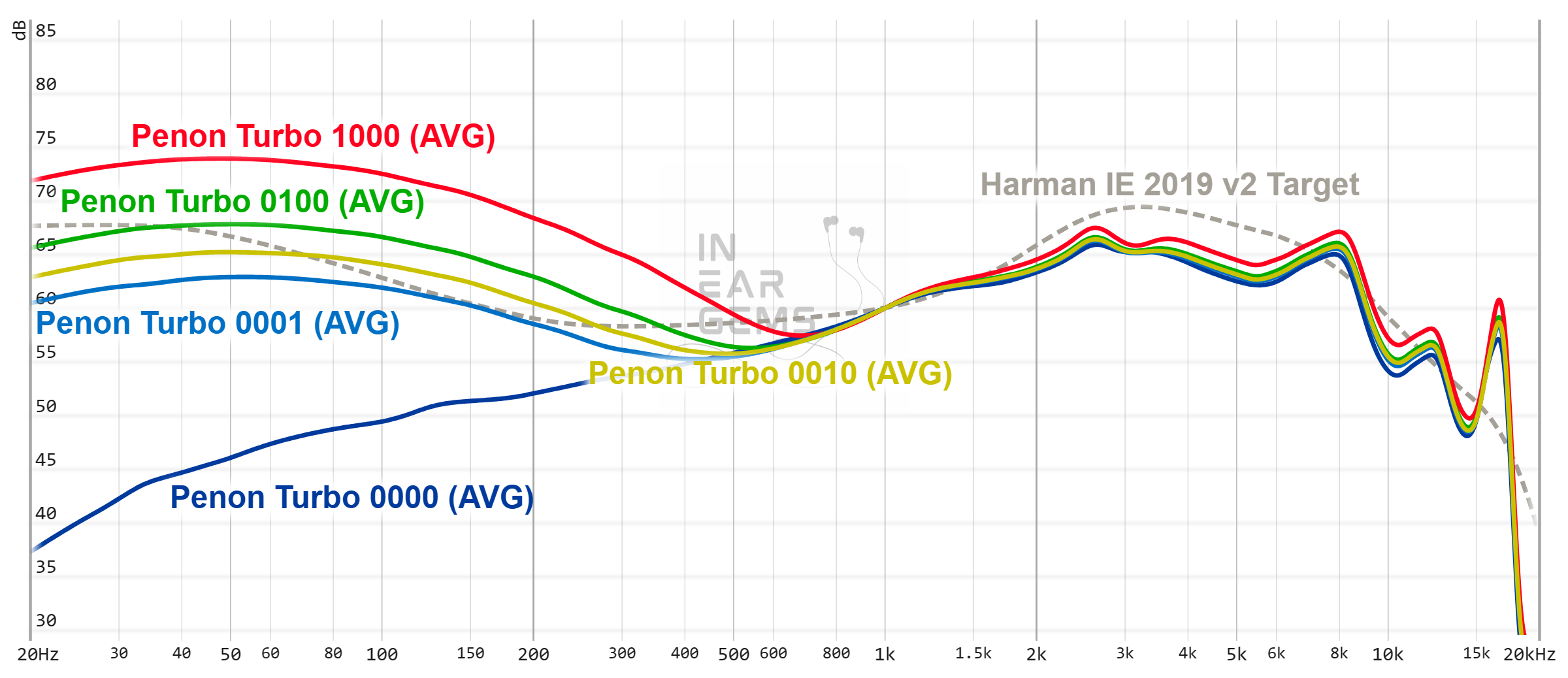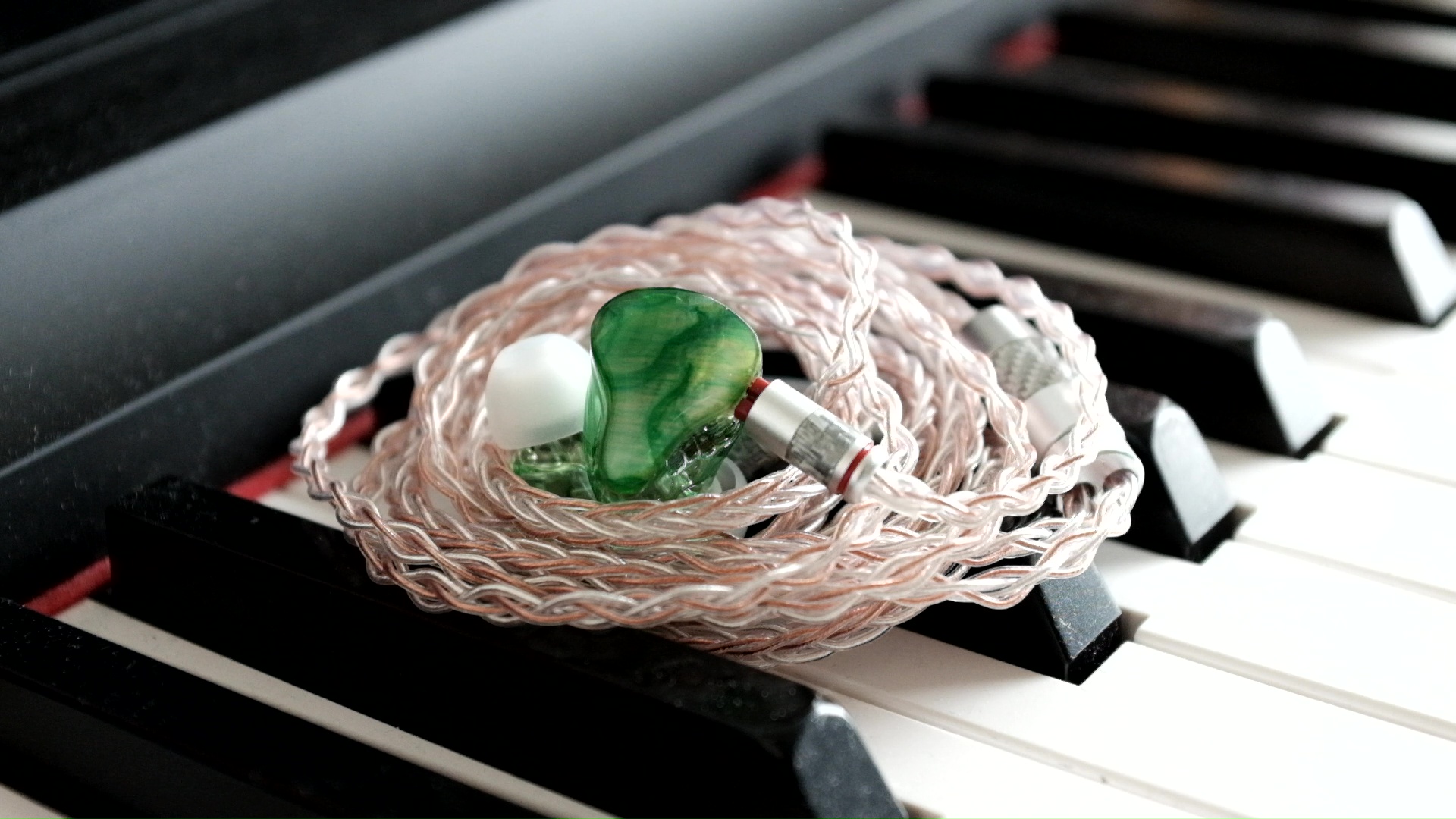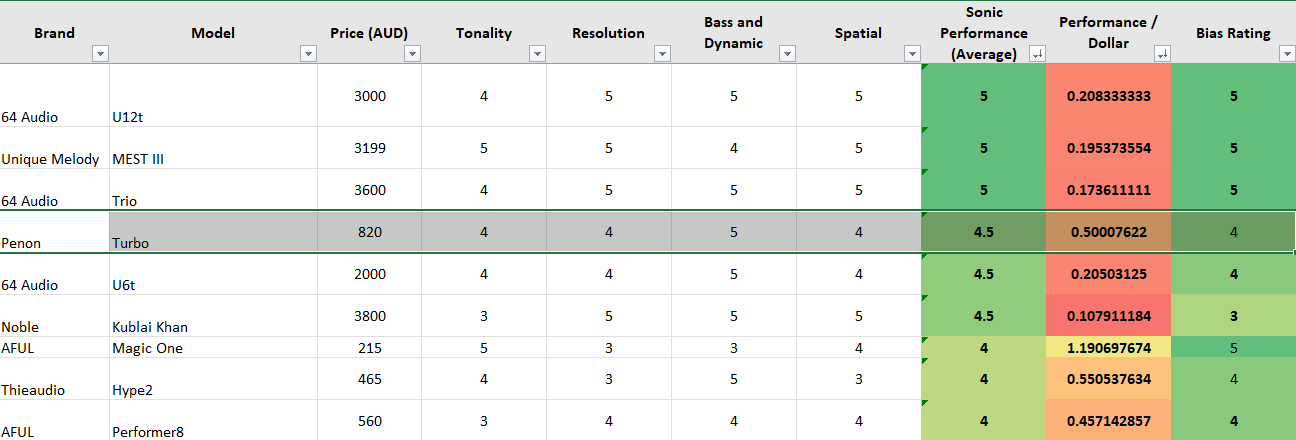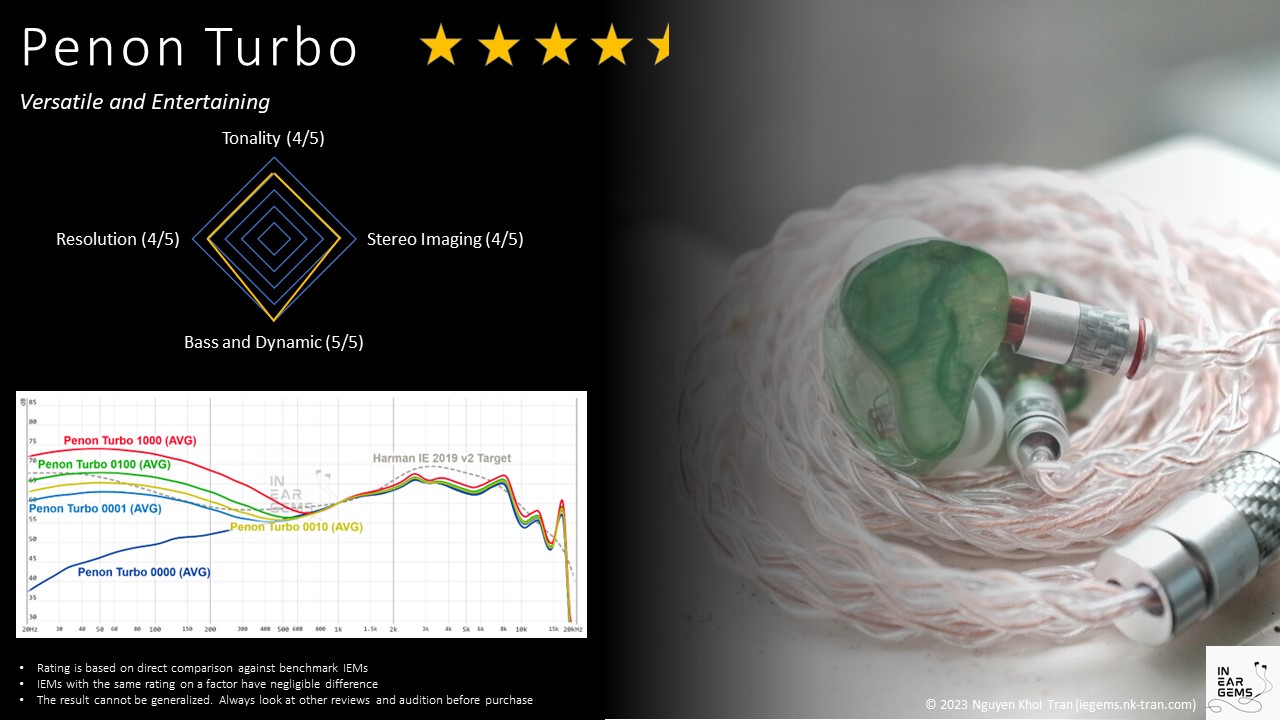First of all I would like to thank Penon Audio. She supplies me with the turbo for a tour in Germany. I would like to publish my review here on Head-fi. I used Chat GPT to help with the translation. I hope this doesn't affect readability too much. I became aware of the Penon brand through a dear friend who is currently no longer active in the community. He had organized the Penon Serial Tour back then. The series remains in my memory because of its excellent tone.
For everyone who is in a hurry:
Advantages:
- Pleasant musical performance
- Still excellent detail
- Very good separation and instrument positioning in this price range
- Above-average sound in this price range
- Cable without microphones
- The tuning system enables an extremely variable sound (from audiophile to bass-heavy).
Disadvantages
- (Turbo) bass switch may not be suitable for audiophile interests
First I would like to briefly introduce my musical experiences and my equipment:
Musically, I'm at home in rock & metal, but I also like to listen to some pop, currently also from my youth, which was a few days ago. I prefer a balanced, slightly warm tonality. However, I don't want to miss any details. The bass should be strong, but not dominate the mix or go into the middle. Good instrument separation, combined with good positioning, enhances the musical experience and creates a comfortable stage. However, too much energy in the upper midrange spoils my enjoyment of music.
The Turbo was heard on the A&K SP2000T and was compared to the ACTIVO CT10, A&K PEE51 and A&K XB10.
Package contents
This time the Turbo arrived without any additional packaging. This is not relevant to the evaluation of a tour and avoids additional waste. In the typical Penon blue hard-shell housing, we find the well-known CS819 cable (silver-plated OCC) from the series next to the earphones. The braided cable is soft and supple, not too thick and does not produce microphonics. Additionally there are 3 different 4.5mm silicone tips (grey-green, clear-red and clear-green). The package is supplemented by tools for cleaning the sound outlet pipes and adjusting the tuning switch.
Comfort
I was a bit biased, especially when it came to tightness. Previously, I always had problems when IEMs had a printed seat for the eartip. The position of the tip was then not fully defined and the tip could move backwards when inserted into the ear. This made complete sealing difficult or impossible. This was a dealbreaker for me, even with 64Audio IEMs. That's why I prefer IEMs with metal sleeves etc., like those from Penon Serial or Thieaudio. Fortunately, things are different with the Turbo. The tips are defined and firm and do not push back on the tube during insertion. This eliminates the need to frequently adjust the fit in the ear and ensures a perfect seal. Once the turbo is in your ear, you quickly forget about it and can concentrate fully on enjoying the music. The Penon standard cable, as already mentioned, is microphone-free and offers good resolution and tonality. To my ears it plays very musically. If you are already happy here and hear a lot of switch details depending on the position of the tuning, an upgrade may not be necessary.
Tuning-System
Over the course of my HiFi journey, I have heard or owned several IEMs with a tuning system. As examples I would like to mention Shure with interchangeable sound tubes and IMR Acoustics with a tube and filter system. In both variants, the components have to be screwed together, which takes some time. Penon has chosen a switch system that can be adjusted easily and without much effort from the outside. The system consists of 4 switches in two groups:
Single switch (Bass Boost)
Switch 1 on the left is a bass boost switch. It can be used together with the other 3 switches or independently. When used independently, it is a low frequency super boost mode. The remaining 3 switches from group 2 can be used to further change the sound, including the bass.
3-switch system (tuning)
The number corresponds to switching on and 0 to switching off:
100 – Low frequency gain
020 – Emphasis on the voice
003 – High frequency amplification
Sound
In all three tuning modes, the Penon Turbo has a rich bass that doesn't necessarily sound like a balanced armature (BA) bass. It can provide volume and fullness while remaining clean and accentuated. There is no booming sound in the lower middle as long as you don't use the turbo switch. This is ensured by the lowering of the frequency response immediately after the bass. The rest of the vote does not show any outliers that would disrupt the enjoyment of the music. The mittens are perfectly coordinated and are slightly forward facing in the mix. Guitars have bodies and an excellent timbre. You can follow the attack of the string acoustically. The vocals are slightly in the foreground and, like the overall mood, are very clear. Even at high altitudes, the turbo shows no weaknesses. They sound BA-like, smooth and detailed. There are no hissing sounds or sharp hissing sounds. The sound is very good in the price range, but not oversized like the Sennheiser HD800, for example. This is due to the not very pronounced tuning in the air frequency range. As already mentioned, I find the Penon Turbo extremely successful with its musically detailed playing style.
Influence of the tuning system
In my opinion , the individual
bass boost or turbo switch is not suitable for audiophile enthusiasts. When activated, the boost is very powerful and the bass penetrates into the middle. The sound reminds me a little of the Fatfreq Maestro Mini. However, the Maestro Mini had even more bass energy. The Turbo avoids the sharp upper mids and highs presentation that the Maestro Mini had.
The
3-switch system represents (fine) tuning because it works much more subtly than the turbo switch. At first, since I came from the Penon Serial, I often listened with the setting 0-123. With this setting, the Turbo already has an infectious musical bass and the overall colorful playing style that Penon is familiar with. Finally, I would recommend it for albums from before the turn of the millennium to bring the sound up to date.
In my opinion, the settings 0-020 and 0-023 are suitable for current productions when you want to emphasize the tone towards the black background, separation and stage. Whether you adjust the height switch is ultimately a question of privacy and music production. Even age-related hearing loss at high frequencies could be compensated for with the third switch. For example, the album “Ghost – Opus Anonymus” sounded better to me with 0-023 than without the treble switch. The vocal setting 0-020 can sound brilliant on very well produced music and make additional details more audible.
EQ
Basically, the Turbo is suitable for me for playlists. My playlists contain titles from the late 60s, good and not so good recordings, originals and remasters. Fortunately, the Turbo is an earpiece that allows listening across decades and productions without the need to constantly change tuner switch settings. If you still want to work on tuning, the Turbo is an IEM that responds well to EQ. I've only experimented with minor corrections. For example, you can slightly fill in the small depressions in the transition to the lower mittens to create more mittens and counteract the V-shaped tuning. Perhaps a slight lowering of the mid-bass could be considered if the production is over-mastered. Otherwise, “central bleeding” can occur. Without these fixes the turbo will remain clean and clear. Increasing the air frequency range can be beneficial if the music you listen to is too bass heavy or you simply prefer it. I quickly got used to the dynamic playing style of the Turbo and was therefore able to forego the use of an EQ.
Ear plug
The sound can also be subtly influenced by the tips included in the package:
The gray-green tips provide high-frequency extension, amplifying the fundamental tone and improving the sense of space and layering. On the other hand, the clear red tips reduce sibilance, bring the vocals forward and make the music sound more balanced overall. The clear green tips also deliver clear voices and slightly improved details due to the reduced fundamental tone. I also like to use the Softears silicone tips, which seal perfectly for me due to their shape and thus amplify the bass. Even though they are intended for TWS (True Wireless Stereo), Spinfit CP360 goes in a similar direction. Spinfit W1 brightens the sound while Azla Crystal sits between the two. Spinfit CP145 makes the sound a little slimmer and more balanced.
Music examples
Finally, I would like to talk about a few songs. The following descriptions are based on the A&K SP2000T:
Dream Theater – Octavarium & Avantasia – The Scarecrow
Both are my epic reference songs. The Scarecrow opens with some drums that sound powerful but dry. During the song, the guitars and drums show me whether the IEM is designed for effects. Then it quickly becomes tiring. The Turbo does an excellent job of reproducing many details throughout the song. With Octavarium it's the keyboard passages that sound very natural and let your mind wander. As the engine progresses, the turbo never loses control despite the increased number of instruments. Everything remains clean and absolutely audible; it never sounds too analytical. Luckily, guitars aren't scalpels; they don't sound too thick, too sharp or too thin. A thin-sounding IEM can quickly become annoying, especially in lead guitar solo passages from Dream Theater. Very good spatial effects can be heard in both songs.
Jefferson Starship – Jane & Freedom at Point Zero
The entire album contains songs or guitar riffs that can be quite challenging for listeners who are too bright or focused on presence and effects. The electric guitar can sound very shrill or scratchy. Fortunately, the Turbo doesn't show these effects, but still offers an excellent presentation. The stars of the song are clearly the guitars, which have an excellent texture. The bass plays minimally in the foreground and the synthesizer sounds absolutely authentic.
Ghost – Phantom der Oper (Iron Maiden Cover)
The guitars sound almost magical with a perfect body, simply impressive. The album Phantomime is modern and “weighty” in the mix. The turbo stays clean on the drums, and the separation and vocals also sound very good as usual. The (lead) guitar sounds confident and doesn't stand out from the mix.
Sophie Lloyd (feat. Michael Starr) – Runaway
My Focal Clear is having a bit of a hard time (separation) here because the drums and riffs are mixed really thickly. Not so with the turbo in position 0-023. Here he can take advantage of the speed of his BA drivers and play the songs much cleaner and still convincingly. Similar to the Maiden cover of Ghost, the dip between bass and mids no longer plays a role. In both songs I find the balance between musicality and details perfect.
Serenity – Wings of Madness & New Horizons
These songs are a benchmark for good bass rumble, and the Turbo does a great job of reproducing it.
Purple Disco Machine – In the Dark
Even though I mostly listen to rock and metal, this is a reference song for a successful modern mix. With clear female vocals, we have super-fast reproduced synthetic drums and beautiful micro details.
Whole Lotta Love – Led Zeppelin
I mean, that's how Zeppelin would have liked to hear the song. The guitar riffs start with a wonderful scratch, the bass line fits perfectly without dominating, and Robert Plant sounds like he was in his best days.
Comparison with other IEMs
For me, the Turbo represents a further development of the
Penon Serial, even if one would generally assume that this is reserved for the Penon Quattro. However, I haven't heard the Quattro yet. Compared to the Turbo (0-123), the Penon Serial is tuned relatively similarly. Both music IEMs offer enhanced bass with warm tonality. However, the Turbo excels in resolution and soundstage.
The
Penon Fan 2 is characterized by a solid fundamental tone and avoids increasing the deep bass, making it sound very balanced. However, it lacks the expressive midrange of the Turbo. Here too, the bass is noticeably less defined and enveloping due to the DD drivers.
Another competitor is undoubtedly the
Softears RSV (5BA), which in my opinion has a leaner bass and is tuned too energetically in the highs.
On the other hand, the
Penon Impact is a TOTL (Top Of The Line) IEM that plays above the turbo due to its performance. The bass is less pronounced and even clearer. When playing electric guitars, the mids have a somewhat magical feel to them. Thanks to the EST drivers, the highs are more energetic and reveal additional details.
Tone on tone
A green petrichor zombie cable. Which tips do you prefer, gray-green or clear green?
Conclusion
As you can easily see, I really like the Penon Turbo because of its musically detailed playing style. The 6 BA drivers work perfectly together to enjoy a wide range of music. However, they lean more towards the musically detailed side of the spectrum. They shine with beautiful details from the mids onwards. Anyone looking for an absolute analyzer should look elsewhere. The turbo accelerates and captivates me with its musicality. Over the years, I have heard many IEMs from Dunu, Moondrop, 64Audio, Thieaudio, etc. that were priced up to $2.5k.
Hardly any headphones have impressed me as much as the Turbo, apart from the unfair comparison with TOTL IEMs like the Penon Impact or the Thieaudio V16 Divinity.















